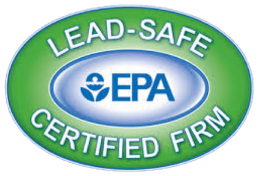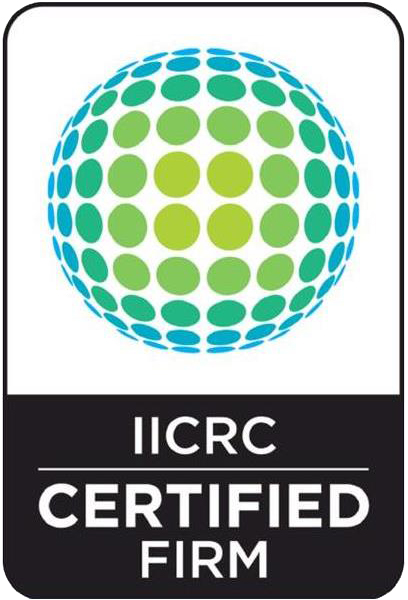Climate change is increasing risks from flooding, fires, and other natural disasters. Adaptation strategies are essential to make communities more resilient in the face of these threats. As restoration services and projects help rebuild after disasters, integrating features like flood barriers, fire-resistant materials, backup power, and other measures can mitigate damage from future events.
Table of Contents
Assessing Vulnerability to Climate Risks
The first step is conducting risk assessments to identify vulnerabilities. Analysis of factors like:
- Historic disaster data – Examining patterns of past flood, fire, and storm events provides insights into which areas are most prone to damage. Mapping the extent, frequency, and intensity of prior events highlights recurrent hotspots at the highest risk. Costs and community impacts associated with previous disasters quantify potential future consequences.
- Flood zone mapping – Updated flood insurance rate maps delineate expected inundation extents for different severity flood events. Seeing where 100-year and 500-year floodplains encroach on inhabited areas highlights at-risk properties and infrastructure. Analysis of projected climate impact models indicates these flood zones are likely to expand over time.
- Coastal erosion patterns – Long-term coastline movement data reveals rapid erosion hotspots. Key factors accelerating erosion like wave dynamics, sea level rise, tidal patterns, and storm surges can be incorporated into predictive models to determine future recession rates. This allows anticipatory adaptation planning for threatened seaboard communities before losses occur.
- Wildland-urban interface fire risk areas – Maps delineating zones where structures abut flammable native vegetation identify areas most prone to spreading wildfires. Factors like vegetation types, steepness of terrain, and typical wind directions further refine gradations of risk severity. Ongoing drought and increased seasonal temperatures will likely expand wildfire risk zones significantly.
- Critical infrastructure exposure – Dams, bridges, roads, hospitals, power plants, water systems, and other vital assets require assessment of exposure to potential disruption from coastal and river floods as well as firestorms, hurricanes, and other disaster risks. Anticipating infrastructure vulnerabilities through risk modeling, and then preemptively hardening these vital systems is prudent to maintain continuity of essential functions when disasters strike nearby areas.
Determines what adaptations offer the greatest protection given available resources. Prioritizing adaptations based on cost-benefit analysis ensures maximum risk reduction.
Flood Adaptation Strategies
For coastal and inland flood risks, a combination of natural and engineered defenses is optimal.
Nature-Based Flood Defenses
- Beach nourishment – Importing fresh sand to widen beaches makes them higher and wider, enabling dunes and expanded beaches to better absorb storm surges and wind-driven waves. This cushions inland areas from flooding. Regular beach nourishment is often needed after storms erode replenished beaches. Dredged sand from navigation inlets is typically used for cost-efficiency.
- Wetland restoration – According to NOAA‘s Office for Coastal Management, nature-based flood defenses like wetland restoration not only absorb destructive floodwaters but also enhance habitat and water quality. Restoring degraded marshes, mangrove stands, and other tidal wetlands creates a natural floodwater absorption zone protecting inland inhabited areas.
- Upland buffers – Preserving or expanding open space zones of native vegetation around coastlines and floodplains act as permeable buffer areas to absorb sudden rainfall runoff and flood inflows. This open space helps protect water quality as floodwaters percolate through soils instead of flowing rapidly over hardened urban areas, scouring pollutants into nearby waters.
- Permeable pavements allow stormwater infiltration instead of excessive runoff wherever paved surfaces predominate. Permeable asphalt and concrete mixes, porous pavers, and gravel or grass paver grids all soak up 4-5 times more water than conventional paving. Their widespread use reduces urban runoff flooding risks.
Engineered Flood Barriers
- Breakwaters – Bulkheads, reefs, or other wave-blocking structures erected offshore reduce wave energy reaching the coastline. This diminishes erosion and storm surge heights. Multiple small segmented breakwaters are often more flexible and enhance aquatic habitat compared to long continuous breakwater stretches. They require less maintenance after storms or sea rise but can be more expensive to construct initially.
- Floodwalls – Concrete, masonry, sheet pile, or earth embankment walls erected directly around low-lying inhabited districts keep adjacent floodwaters at bay. They range from small community-scale neighborhood barriers around 2-3 meters tall up to major municipal floodwalls over 9 meters high. Floodwalls usually tie into high ground or other barriers at the ends. Interior drainage infrastructure is critical behind walls to prevent rainfall flooding by trapped stormwaters.
- Levees – Broad earthen mounds or reinforced embankments parallel riversides, restraining overflows during high water events. They require anchor tiebacks and extensive subsurface toe drainage elements to prevent undercutting failures. Levees are often vegetated to stabilize soils. They interfere with natural riverside wetland water exchanges and groundwater recharge. Levee-reinforced channels increase stream flow velocities, potentially worsening downstream floods.
- Flood control channels – Conveyance channels, overflow spillways, and diversion ditches strategically re-route excess waters around protected districts. Channelized floodwaters must have adequate drainage paths to prevent unintended inundation or backup threats. Culverts, gates, and pumping systems help manage diverted overflow volumes.
- Dams and reservoirs enable flood regulation by storing excess water during peak flow periods and slowly releasing controlled discharges downstream. However, reservoirs lose capacity over time due to sedimentation without costly dredging. Dam operations also modify natural flow regimes causing extensive ecological disruptions.
Other Key Flood Adaptations
- Elevating roads, buildings, and equipment gets assets above expected flood levels.
- Culverts, ditches, and drainage infrastructure speed runoff away from properties.
- Floodplain acquisitions and relocations remove assets from unprotectable sites.
Fire Risk Assessment & Adaptation
Wildfires are becoming more intense with hotter, drier conditions. Preventative adaptations reduce risk, while operational planning and infrastructure hardening mitigate impacts.
Fire Risk Assessment
Identifying at-risk areas involves analysis of:
- Vegetation and topography – Densely vegetated areas with steep slopes or chasms concentrate heat and accelerate fire spread. Fuel models categorize vegetation by flammability. GIS overlays of fuels and slopes highlight high-risk zones for proactive fuel reduction.
- Prevailing winds, temperatures, and humidity – Weather patterns drive fire behaviors. Wind fans flames and spreads embers ahead of firefronts. Low humidity and high temperatures enable faster moisture loss and combustion of plants. Historical weather data reveals seasonal high-risk periods while climate change alters patterns.
- Prior burn history and fire modeling – Fire history maps and computational fire models based on fuels, weather, and terrain detail where fires are likely to ignite, spread rapidly, and exhibit extreme fire behaviors. This highlights areas needing priority vegetation management and infrastructure hardening.
- Proximity to fire-prone wildland areas – Where human developments abut flammable native vegetation defines wildland-urban interface (WUI) zones at greatest structural risk. Intermingling buildings and vegetation spreads fires rapidly from fuels to structures or vice versa. Defensible space buffers between wildlands and homes or infrastructure are vital to contain spread.
Assessments integrating these risk factors inform the strategic allocation of resources. Targeting fuel management efforts towards neighborhoods with extreme fire hazard vegetation close to dense housing treats the highest risk areas first.
Fire Adaptation Strategies
Vegetation management like forest thinning, grazing, and prescribed burns reduce potential fuel loads around inhabited areas.
Operational planning ensures adequate evacuation routes and emergency response capabilities. Hardened infrastructure sustains critical functions when fires occur:
- Fire-resistant structures, building materials, and landscaping – Firewise construction standards for roofing, siding, windows, fencing, and decking ensure buildings withstand sparks and radiant heat exposure better. Non-combustible stone walls and minimal flammable vegetation create defensible space immediately around structures. Fire-resistant structures have much higher survival rates when wildfires burn through neighborhoods.
- Backup generators at key facilities – Hospitals, water, and sewage plants, communication towers, evacuation shelters, and emergency operations centers need automatic generators to enable sustained operation if fires disable the power grid. Storing adequate fuel on-site enables at least 5-7 days of reliance until supply chain repairs.
- Redundant transmission lines and renewable microgrids – Electrical networks with backup lines using different poles and rights-of-way avoid simultaneous failure if one set is damaged by fire. Distributed solar, wind, and energy storage in neighborhood microgrids further diversify electricity sources for increased resilience.
- Adequate water pumping capacity and reservoirs – Water systems protected from flames continue functioning after fires pass through. Gravity-fed water from forest reservoirs often persists even in widespread power outages enabling firefighters to protect structures. Neighborhood cisterns offer supplementary reserves.
- Emergency shelters and relief supply capacity – Safe evacuation destinations able to house displaced masses are critical when extensive evacuations are ordered pre-emptively before fires arrive. Stockpiles of cots, blankets, food, water, and medical supplies enable caring for thousands of people for days to weeks if large fires burn through urban areas.
Early warning systems like fire detection cameras enable proactive deployment of resources, accelerating response.
Restoration Projects Integrating Adaptations
After major disasters, the rebuilding process allows the integration of purpose-built adaptations customized to each location’s threats.
For example, a beach town affected by flooding could site restored amenities further back from eroded shorelines. Below-grade infrastructure could be elevated, with backup power systems, enhanced drainage, and other resilience measures built into the recovery plans.
Updated building codes may require more fire-resistant roofs, siding, and decking materials in fire-damaged forested areas. Buried utility lines could replace above-ground wires vulnerable to flames. Renewable microgrids with battery storage offer backup electricity even if wildfires disable larger grid infrastructure.
Costs of building back with integrated adaptations may increase upfront spending on rebuilding projects. However, benefits like avoided future losses often outweigh these expenses over time. Every dollar invested in climate adaptation measures like these returns $4-11 in economic benefits according to impact studies.
Implementing Adaptations with Many Tools
A variety of policy, planning, zoning, and financing tools help facilitate climate adaptations:
Hazard mitigation plans developed by local emergency management coordinate investment priorities based on cost-benefit analysis. These help justify funding requests.
Comprehensive development plans shape resilient growth patterns by setting adaptation standards for public and private construction.
Overlay zones impose additional resilience requirements for high-risk areas, like requiring open space buffers near floodplains.
Incentives like stormwater fee credits, density bonuses, expedited permitting, and property tax breaks encourage property owners to implement adaptations that ease public infrastructure burdens.
Public funding through FEMA and HUD disaster recovery grants, Army Corps flood control projects, and state/local bonds finance large-scale adaptations.
Private financing options like resilience bonds, catastrophe bonds, and insurance-linked securities allow private capital to invest in public adaptation projects.
The U.S. EPA provides a wide variety of tools, training, and information to help communities build resilience to flooding, wildfires, storms, and other threats exacerbated by climate change.
In Summary
Climate change multiplies the risks communities face from flooding, fires, storms, and other disasters. Investing in adaptive measures to increase resilience protects lives, property, and critical systems from disruption.
Assessing risks, prioritizing cost-effective adaptations, embedding resilience in rebuilding efforts, and utilizing available implementation tools allows preparation for the threats ahead. Renewed and reinforced, adapted communities can thrive in the face of increased climate instability.



